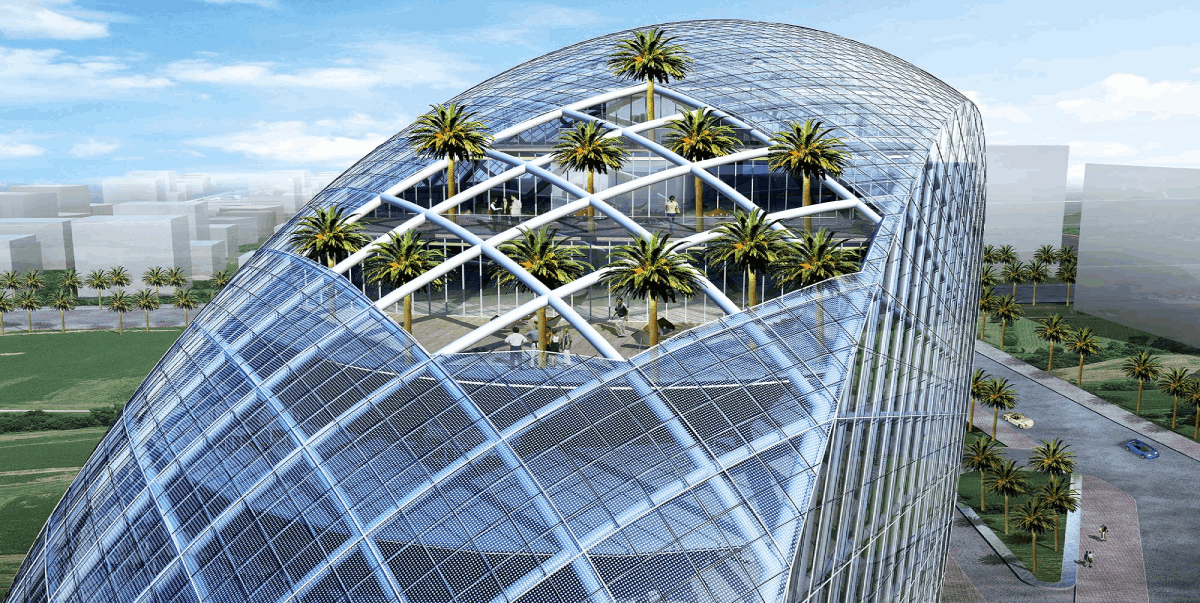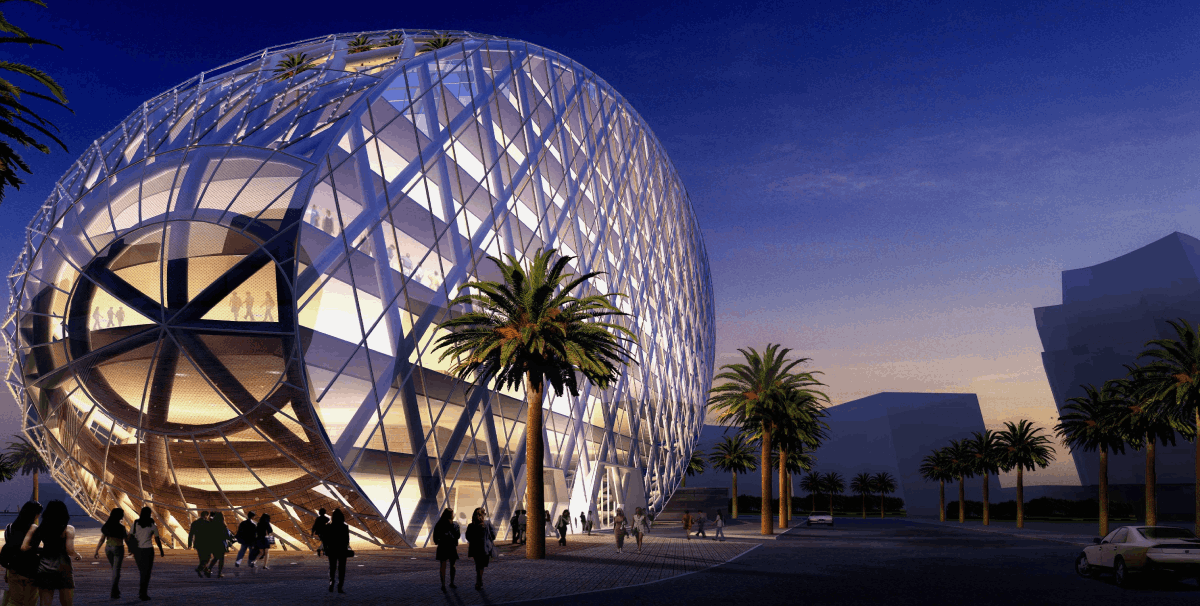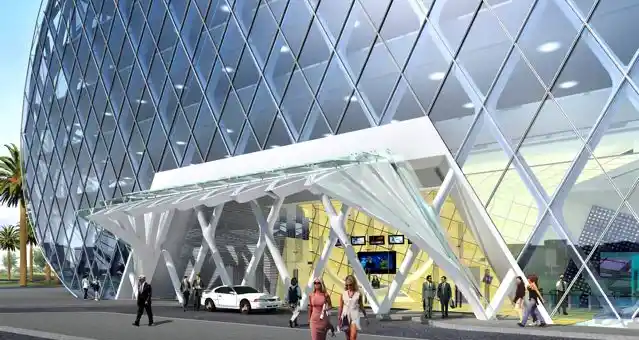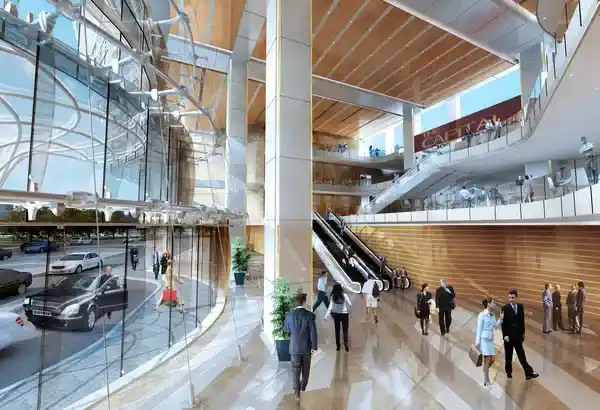In the ever-evolving landscape of architecture, innovation drives the development of structures that not only meet functional needs but also embody futuristic design principles. Among these groundbreaking structures, the Cybertecture Egg, designed by the renowned architect James Law, stands out as a pioneering example of how architecture can integrate advanced technology, sustainability, and aesthetic appeal. This article delves into the various aspects of the Cybertecture Egg, exploring its design philosophy, technological integration, environmental impact, and its broader implications for the future of architecture.
- Concept and Design Philosophy of Cybertecture Egg
- Vision and Inspiration
- Aesthetic Appeal
- Structural Innovation
- Technological Integration of Cybertecture Egg
- Smart Building Technologies
- Energy Efficiency
- Environmental Sustainability
- Functional Aspects of Cybertecture Egg
- Office Space Design
- Health and Wellness Features
- Accessibility and User Experience
- Impact on the Urban Landscape of Cybertecture Egg
- Cybertecture Egg Contribution to the Skyline
- Cybertecture Egg Influence on Local Architecture
- Economic and Social Impact
- Challenges and Criticisms
- Cost and Feasibility
- Maintenance and Longevity
- Cultural and Aesthetic Considerations of Cybertecture Egg
- Future Directions of Cybertecture Egg
- Evolving Technologies
- Expanding Sustainable Practices
- Redefining Urban Spaces
- Conclusion
Concept and Design Philosophy of Cybertecture Egg
Vision and Inspiration
The Cybertecture Egg, located in Mumbai, Maharashtra, India, represents a bold vision of what modern architecture can achieve when driven by technological advancement and sustainable design principles. Designed by James Law, a prominent architect known for his innovative approach, the building is conceptualized as a “cybertecture” structure—an amalgamation of cybernetics and architecture. This design philosophy emphasizes the integration of technology into the very fabric of the building, transforming it into a dynamic and responsive entity.
Aesthetic Appeal
The aesthetic of the Cybertecture Egg is characterized by its unique elliptical shape, which resembles an egg lying on its side. This design choice is not merely for visual appeal but serves several functional purposes. The egg-like shape minimizes the surface area exposed to the sun, thereby reducing heat absorption and improving energy efficiency. Additionally, the smooth, continuous surface of the building contributes to its aerodynamic qualities, which help in reducing wind resistance.
Structural Innovation
The structural framework of the Cybertecture Egg employs advanced construction techniques and materials. The building’s core is supported by a central steel frame that allows for maximum flexibility in the layout of interior spaces. This core is surrounded by a lightweight, high-strength composite material that provides both insulation and structural integrity. The result is a building that not only looks futuristic but also stands as a testament to engineering prowess.

Technological Integration of Cybertecture Egg
Smart Building Technologies
One of the most remarkable aspects of the Cybertecture Egg is its integration of smart building technologies. The building is equipped with a range of sensors and control systems that monitor and manage various environmental conditions, including temperature, humidity, and light levels. These systems are designed to optimize energy usage and enhance occupant comfort. For example, the building’s facade is embedded with photovoltaic cells that convert sunlight into electricity, contributing to the building’s energy self-sufficiency.
Energy Efficiency
Energy efficiency is a cornerstone of the Cybertecture Egg’s design. The building features an advanced energy management system that leverages both passive and active strategies to minimize energy consumption. Passive strategies include the building’s aerodynamic shape and high-performance glazing, which reduce the need for artificial cooling and heating. Active strategies involve the use of renewable energy sources, such as solar panels, and advanced HVAC systems that adjust their operation based on real-time data.
Environmental Sustainability
Environmental sustainability is a key consideration in the design of the Cybertecture Egg. The building incorporates several green building practices, including the use of recycled materials and low-emission construction techniques. The green roof and vertical gardens contribute to improved air quality and provide insulation, further enhancing the building’s environmental performance. Additionally, the Cybertecture Egg has received recognition for its adherence to international green building standards, demonstrating its commitment to sustainable development.
Functional Aspects of Cybertecture Egg
Office Space Design
The primary function of the Cybertecture Egg is to serve as a commercial office space. The interior layout is designed to maximize flexibility and adaptability, allowing for a variety of office configurations and uses. Open-plan spaces are complemented by modular partitions that can be easily reconfigured to meet changing needs. This design approach fosters collaboration and innovation while providing the necessary infrastructure for a high-performance work environment.
Health and Wellness Features
The design of the Cybertecture Egg also prioritizes the health and wellness of its occupants. Natural light is strategically harnessed through the building’s extensive glazing, creating a bright and pleasant working environment. Indoor air quality is maintained through advanced ventilation systems and the use of non-toxic building materials. Furthermore, the building includes wellness facilities such as fitness centers and recreational areas, promoting a healthy and balanced lifestyle for its users.
Accessibility and User Experience
Accessibility is a key consideration in the design of the Cybertecture Egg. The building features barrier-free access points and elevators to ensure that all users, including those with disabilities, can navigate the space comfortably. The user experience is enhanced through intuitive wayfinding systems and interactive digital interfaces that provide information and services at the touch of a button.

Impact on the Urban Landscape of Cybertecture Egg
Cybertecture Egg Contribution to the Skyline
The Cybertecture Egg has made a significant impact on Mumbai’s skyline, adding a touch of futuristic sophistication to the city’s architectural landscape. Its distinctive shape and cutting-edge design make it a landmark that attracts both attention and admiration. The building serves as a symbol of Mumbai’s growing status as a hub of innovation and modernity, contributing to the city’s global image.
Cybertecture Egg Influence on Local Architecture
The innovative design of the Cybertecture Egg has also influenced the local architectural community. Its success has demonstrated the potential for integrating advanced technologies and sustainable practices into modern buildings, inspiring other architects and developers to explore similar approaches. The building serves as a case study in how technology and design can come together to create spaces that are not only functional but also visually striking.
Economic and Social Impact
The Cybertecture Egg’s presence in Mumbai has had a positive impact on the local economy by attracting businesses and creating job opportunities. The building’s state-of-the-art facilities and prime location make it an attractive option for companies looking to establish a presence in the city. Additionally, the building’s design has fostered a sense of pride and identity among local residents, contributing to the social and cultural vibrancy of the area.
Challenges and Criticisms
Cost and Feasibility
One of the challenges associated with the Cybertecture Egg is its high construction cost. The use of advanced materials and technologies, as well as the complex design, has resulted in a significant financial investment. While the building’s innovative features and long-term benefits may justify the expense, the cost has been a point of discussion among critics and stakeholders.
Maintenance and Longevity
Another area of concern is the maintenance and longevity of the building’s advanced systems. The integration of cutting-edge technologies requires ongoing maintenance and updates to ensure optimal performance. There is also the question of how the building’s systems will perform over time and whether they will remain effective as technology continues to evolve.
Cultural and Aesthetic Considerations of Cybertecture Egg
The futuristic design of the Cybertecture Egg has sparked debate about its cultural and aesthetic fit within Mumbai’s architectural context. Some critics argue that the building’s avant-garde style contrasts sharply with the traditional and historical architecture prevalent in the city. This has led to discussions about the balance between innovation and cultural heritage in architectural design.

Future Directions of Cybertecture Egg
Evolving Technologies
As technology continues to advance, future iterations of buildings like the Cybertecture Egg may incorporate even more sophisticated systems and features. The integration of artificial intelligence, advanced robotics, and new materials could further enhance the building’s functionality and sustainability. Future designs may also explore new ways to interact with and adapt to the environment, pushing the boundaries of what is possible in architecture.
Expanding Sustainable Practices
The principles of sustainability demonstrated by the Cybertecture Egg could be applied to a broader range of building types and contexts. As the world faces increasing environmental challenges, the adoption of green building practices and renewable energy solutions will become even more crucial. The Cybertecture Egg serves as a model for how architecture can contribute to a more sustainable future, and its principles may inspire further innovations in this area.
Redefining Urban Spaces
The success of the Cybertecture Egg highlights the potential for architecture to redefine urban spaces and enhance the quality of life in cities. As urbanization continues to accelerate, there will be growing opportunities to create buildings that are not only functional but also contribute positively to the urban environment. The Cybertecture Egg’s approach to integrating technology, sustainability, and design could serve as a blueprint for future urban developments.

Conclusion
The Cybertecture Egg represents a bold and visionary approach to modern architecture, combining cutting-edge technology with sustainable design principles to create a building that is both functional and aesthetically striking. Its innovative features, from smart building technologies to energy-efficient systems, demonstrate the potential for architecture to address contemporary challenges and shape the future of urban spaces. While it faces challenges and criticisms, the Cybertecture Egg remains a significant milestone in the evolution of architecture, offering valuable insights and inspiration for the field. As we look to the future, the principles embodied by the Cybertecture Egg will continue to influence and inspire architects, developers, and communities around the world.
